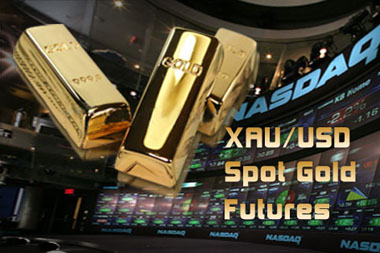 Gold’s popularity has grown over the past few years as an alternative currency trade. Many traders look to the precious metal as a hedge against inflation and storage of value – thus, it is often referred to as a “safe-haven” investment. Historically, gold prices tend to move inversely with the U.S. dollar, however with rising geopolitical uncertainty over the past 5-years this correlation is no longer as evident. In response to greater demand and product diversification, gold has begun to trade relative to other currencies as well.
Gold’s popularity has grown over the past few years as an alternative currency trade. Many traders look to the precious metal as a hedge against inflation and storage of value – thus, it is often referred to as a “safe-haven” investment. Historically, gold prices tend to move inversely with the U.S. dollar, however with rising geopolitical uncertainty over the past 5-years this correlation is no longer as evident. In response to greater demand and product diversification, gold has begun to trade relative to other currencies as well.
Gold is one of the most difficult financial assets to value. Gold is similar to a currency like the U.S. dollar or the euro because it is durable, portable, uniform across the world, and widely accepted; however, unlike these more commonly traded currencies, gold is not supported by an underlying economy of workers, companies, and infrastructure. In other ways, gold is more similar to a commodity like oil or corn because it comes from the ground and has standardized physical characteristics. Unlike other commodities, though, the price of gold often fluctuates independently of its industrial supply and demand.
It has provided a medium for wealth preservation for centuries, and it is now easily tradeable through gold ETFs. Gold ETFs enable the investor to purchase gold and net the benefits of the precious metal, while foregoing the challenges related to purchasing and housing physical gold. ETFs essentially act as a mutual fund for gold, with one unit of purchase representing, in most cases, 1 gram of gold. These units can be traded on the stock exchange just as you would trade a single share of a company, and transactions are generally managed in the same manner as a stock purchase.
Forex trading, on the other hand, involves a trader making calculated investments and speculations as to the relative valuation of a pair of specific currencies. For example, a trader on the forex markets may feel that the value of the US dollar is poised to increase in relation to the Euro. Through a currency broker, the trader would then enact a currency swap and would then recognize a profit if the value of the dollar does in fact rise. Though both of these investment opportunities present the savvy trader with an ability to make money in both the short and long-term, they are two unique options that each offer noteworthy pros and cons.
Many investment professionals consider gold to be one of the most stable and reliable media on the market. Whilst gold is certainly a standard-bearer when it comes to risk mitigation and consistent, albeit modest, returns on an investment, trading in the forex marketplace provides a level of control that acts as a natural hedge against risk. Most online trading platforms require the trader to establish a margin call figure that will prevent a potential loss from wiping out the funds in a related investment account.







